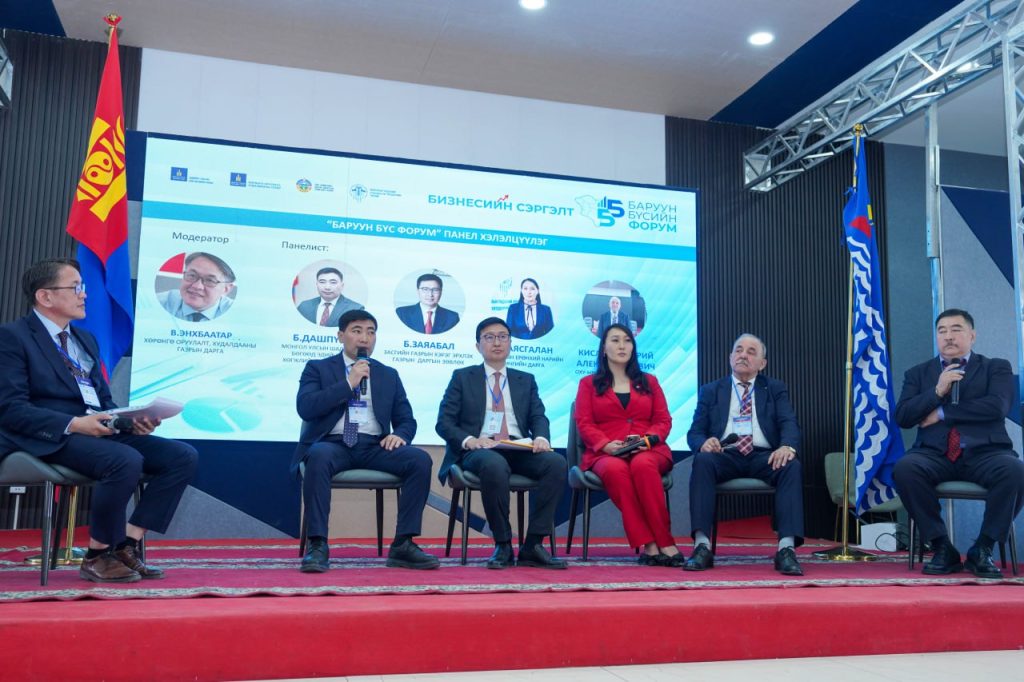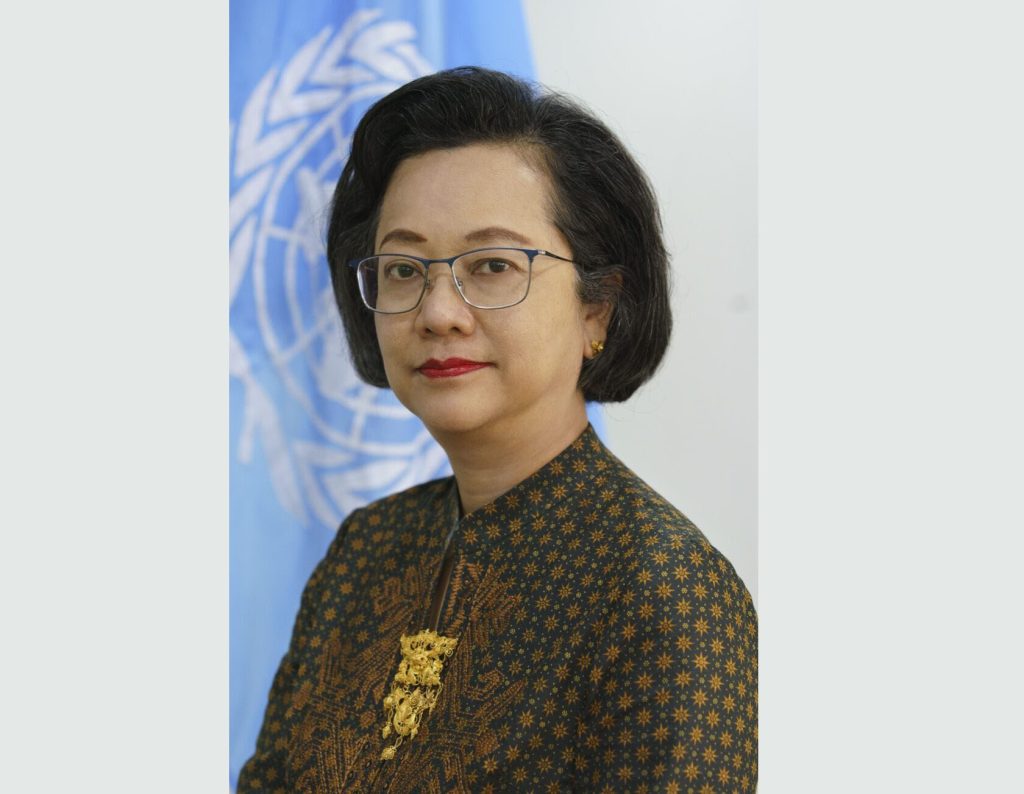Information on transportation
Mongolia’s transportation system comprises of railway, road network and airway.
Railway
In Mongolian rail network spans about 3,063 km, and is the backbone of Mongolian trade. Specifically, the export and import of mineral and mining products through rail have become an increasingly popular means of transportation. In 2022 a total of 16,823.6 thousand tons of mining products were transported using the railway, about 60% of the total transported products.
Total carried freight by railway (in thousand tons, 2019-2022)
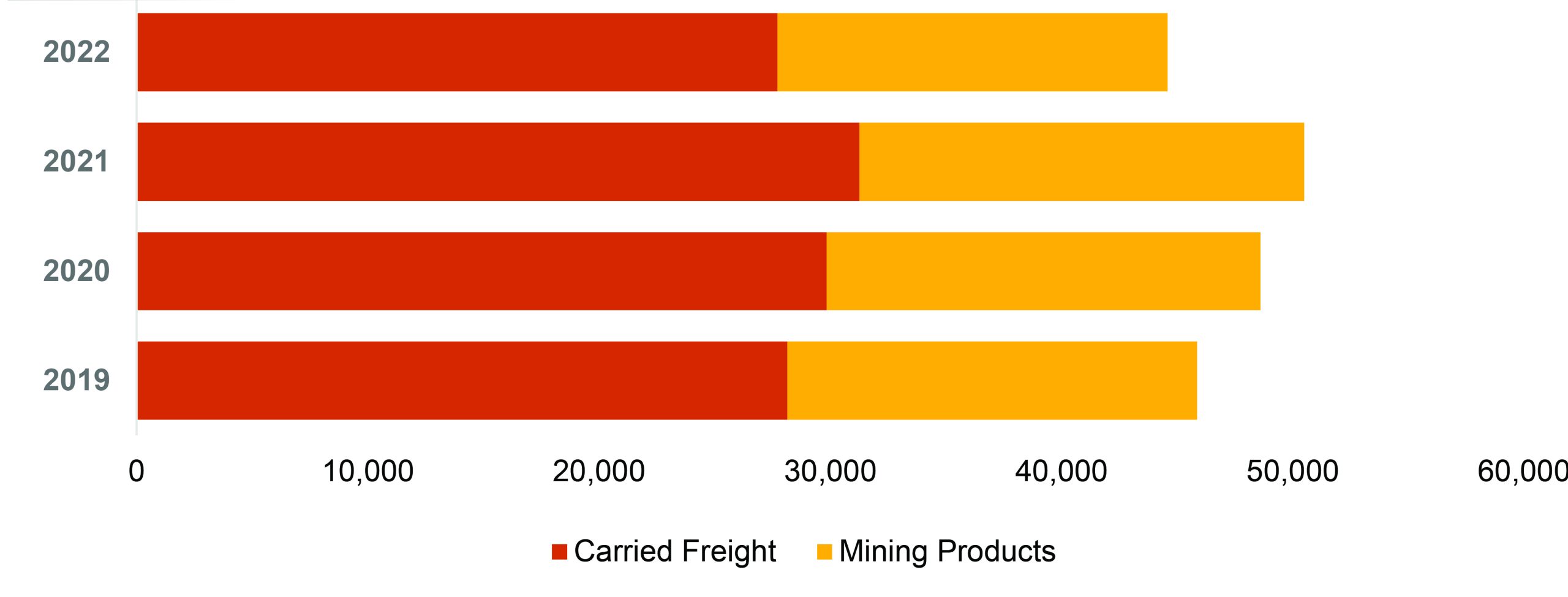 The railway is not a popular means of transportation. In just 2022, Mongolian Railway transported 2.3 million passengers with revenue of MNT 748,176.7 million. There are two major rail border crossing points are operated 24/7 and they are Zamyn-Uud, bordered with China and Altanbulag, bordered with Russia.
The railway is not a popular means of transportation. In just 2022, Mongolian Railway transported 2.3 million passengers with revenue of MNT 748,176.7 million. There are two major rail border crossing points are operated 24/7 and they are Zamyn-Uud, bordered with China and Altanbulag, bordered with Russia.
Road network
The road traffic in Mongolia moves on the right-hand side and spans over a total of 1,135 km of road. However, the only available mode of public transportation is bus service. Road transportation carries important significance in Mongolia’s trade sector. In 2022 a total of 33 million tons of freight were carried making MNT 784.5 billion in revenue. There are in total 33 road border cross points in Mongolia, with China in total 17 and with Russian Federation 16 border cross points.

Airway
Mongolia has total of 6 airport including Chinggis Khan, the only international airport located 20 km from the capital city Ulaanbaatar. Currently, Mongolia has in total of 21 flight destinations of which 16 are international while 5 are domestic. In 2022 the Mongolian airports transported in a total of 618,960 international passengers, however, compared to pre-pandemic, the rate has fallen 48%.
The Civil Aviation Authority of Mongolia has been actively working on opening availability of direct flights to the following countries:
- Azerbaijan
- Doha
- Qatar
- Greece
- Hungary
- Spain
- United Kingdom
- United States
List of international airports:
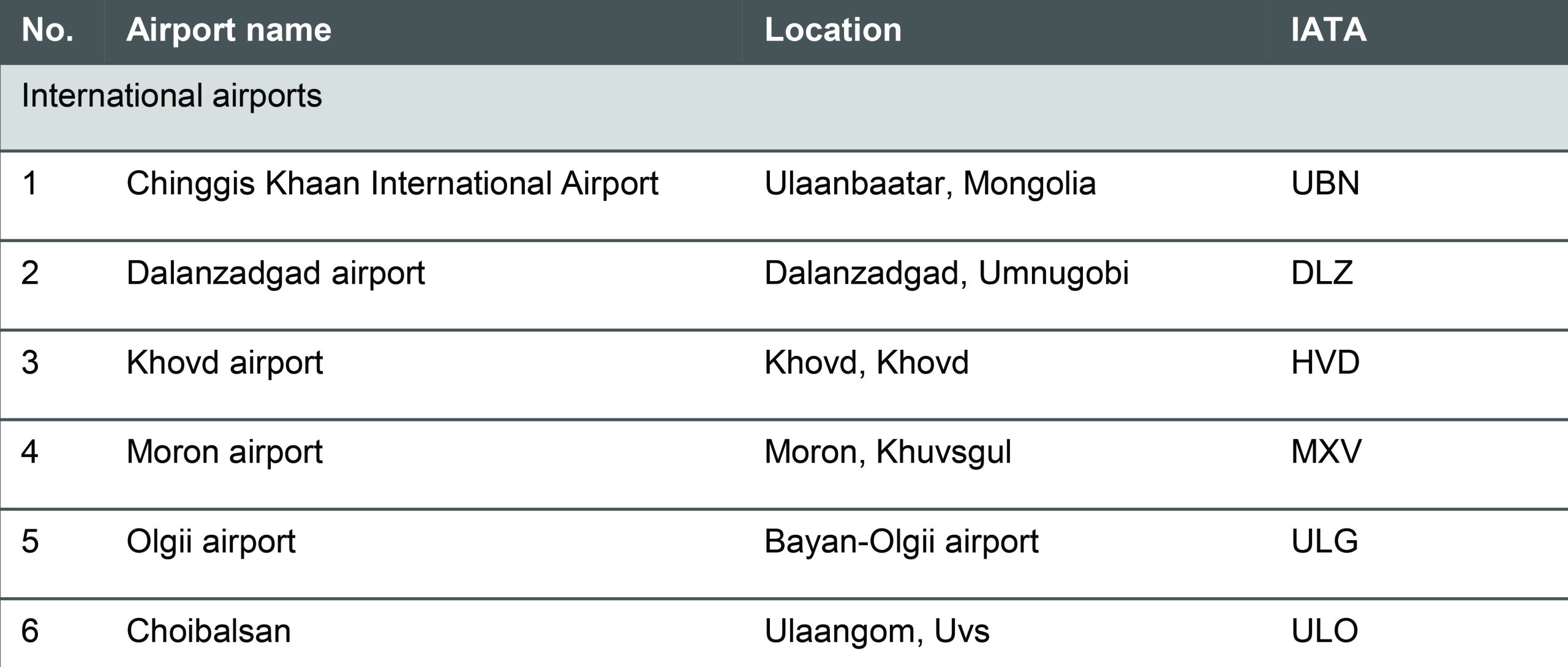
 The number of active mobile phone users reached 4.8 million (double counted) at the end of 2022 according to the NSO. This is an increase of 226.6 thousand users compared to last year. Due to Covid 19, the number of active internet users has increased drastically in 2020. From then, internet users reached 4.18 million (double counted) at the end of 2022 according to the NSO.
The number of active mobile phone users reached 4.8 million (double counted) at the end of 2022 according to the NSO. This is an increase of 226.6 thousand users compared to last year. Due to Covid 19, the number of active internet users has increased drastically in 2020. From then, internet users reached 4.18 million (double counted) at the end of 2022 according to the NSO. There are 4 main telecommunication companies in Mongolia. The cost per 1GB they offer ranges between 1000 MNT to 2000 MNT while the airtime cost per minute ranges between 60 MNT to 80 MNT. According to the Worldwide data pricing survey conducted by www.Cable.co.uk, the telecommunication cost in Mongolia is defined as “cheap” and ranked 43rd out of 233 countries in the list of countries with the cheapest telecommunication cost
There are 4 main telecommunication companies in Mongolia. The cost per 1GB they offer ranges between 1000 MNT to 2000 MNT while the airtime cost per minute ranges between 60 MNT to 80 MNT. According to the Worldwide data pricing survey conducted by www.Cable.co.uk, the telecommunication cost in Mongolia is defined as “cheap” and ranked 43rd out of 233 countries in the list of countries with the cheapest telecommunication cost
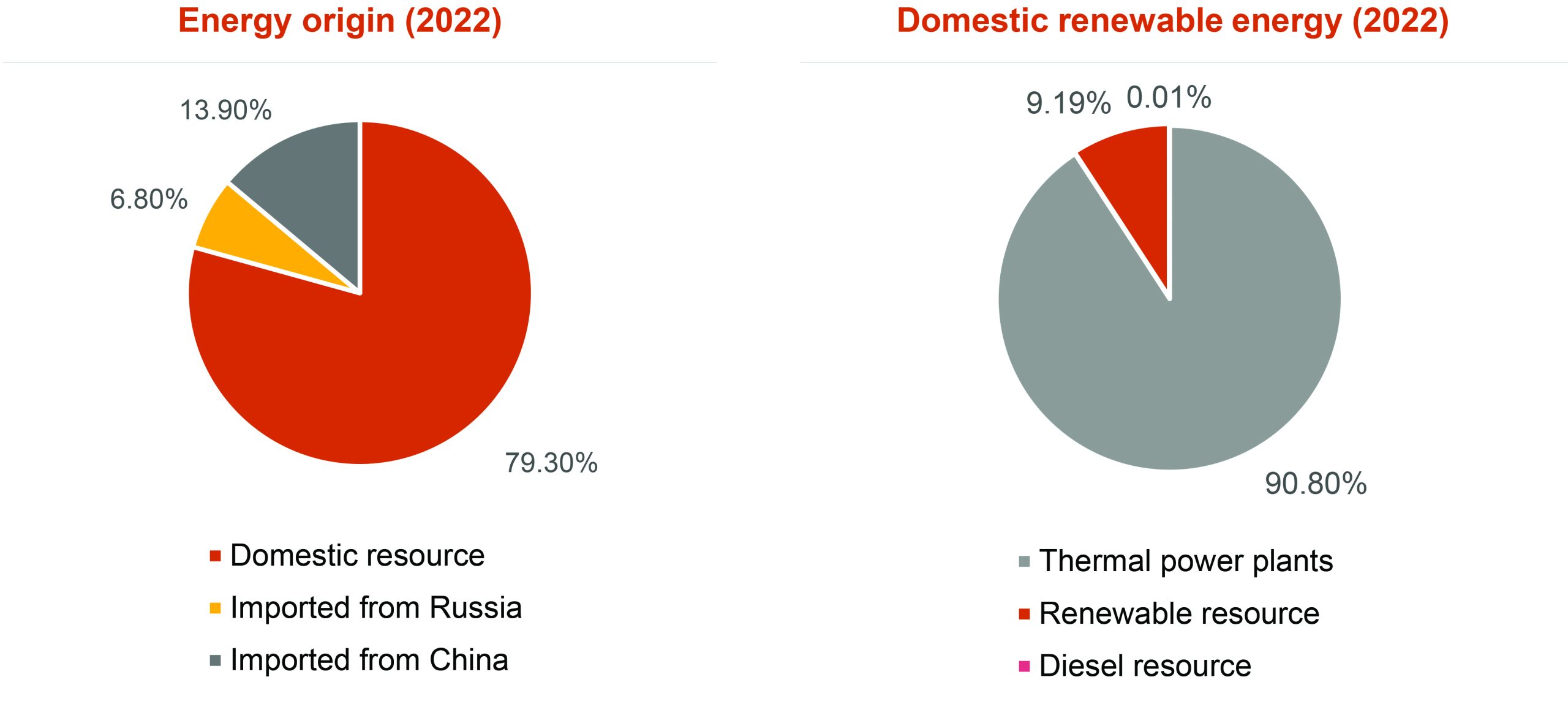 Energy consumption continues to grow, with an average growth rate of 7-8 percent in recent years. Electricity, gas, steam and air conditioning supply has the highest share in energy consumption followed by mining and quarrying sector.
Energy consumption continues to grow, with an average growth rate of 7-8 percent in recent years. Electricity, gas, steam and air conditioning supply has the highest share in energy consumption followed by mining and quarrying sector. Electricity tariffs are set annually by the ERC. As of 2023, An electricity tariff for enterprises ranges between 115 MNT to 390 MNT (equal to 0.03 USD to 0.11 USD) per kilowatt hour depending on the sector.
Electricity tariffs are set annually by the ERC. As of 2023, An electricity tariff for enterprises ranges between 115 MNT to 390 MNT (equal to 0.03 USD to 0.11 USD) per kilowatt hour depending on the sector.  Water reuse/wastewater treatment
Water reuse/wastewater treatment Large mining enterprises such as Erdenet, Oyutolgoi, and Tavan Tolgoi have introduced technology that recycles 70-80% of their wastewater.
Large mining enterprises such as Erdenet, Oyutolgoi, and Tavan Tolgoi have introduced technology that recycles 70-80% of their wastewater. 